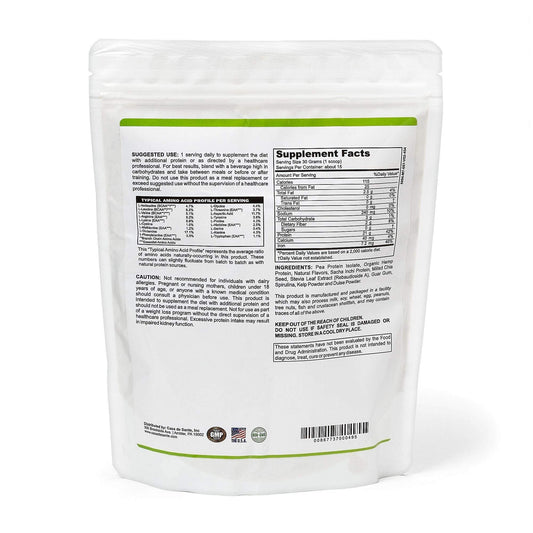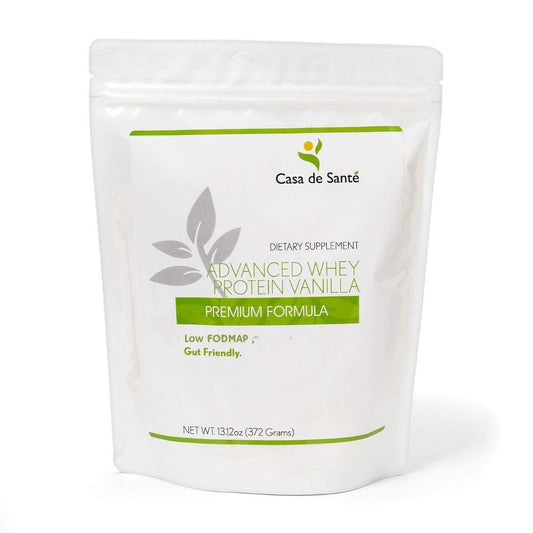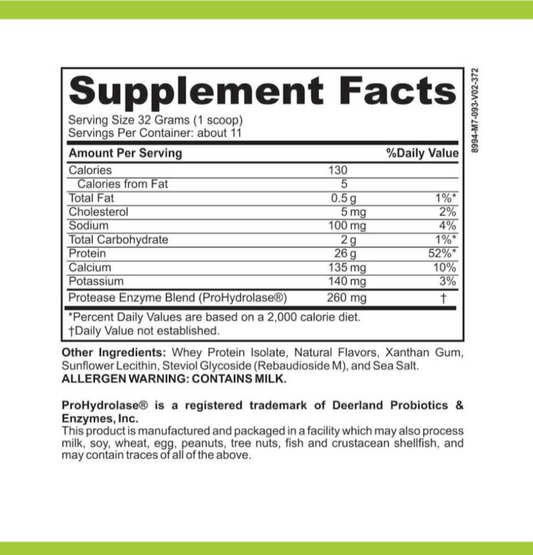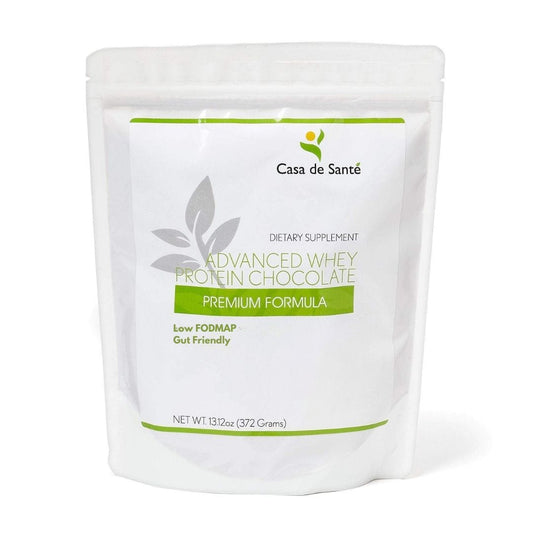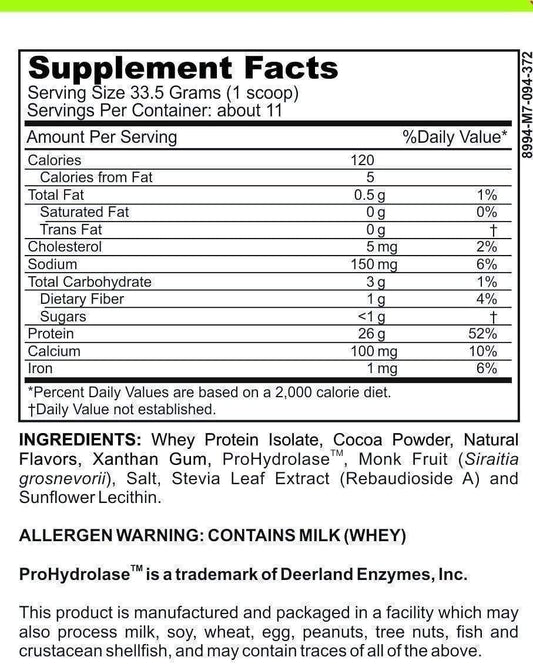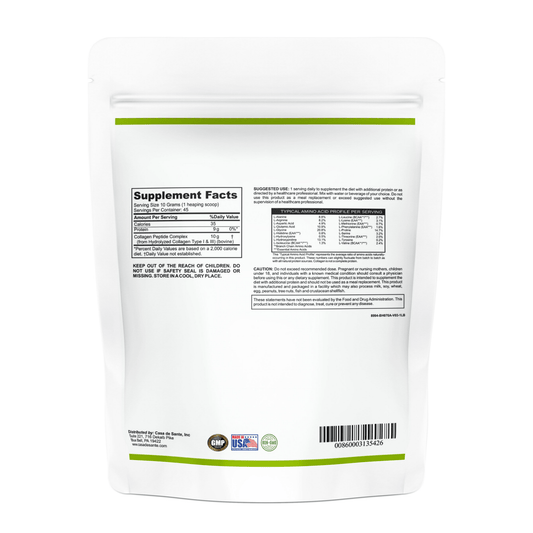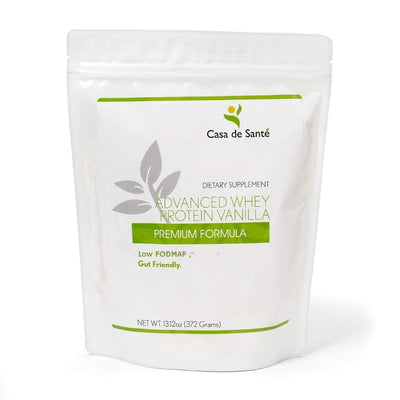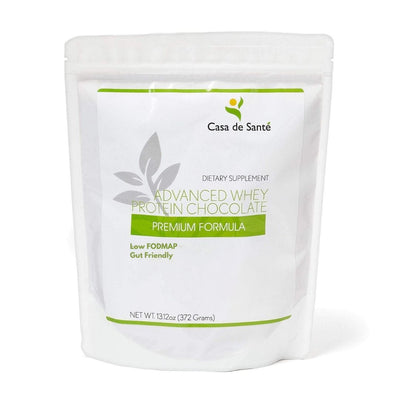Macro-Friendly Chili Recipe: What You've Been Looking For
Macro-Friendly Chili Recipe: What You've Been Looking For
Have you been on the lookout for a delicious and healthy chili recipe? Look no further! In this article, we will introduce you to a mouthwatering macro-friendly chili recipe that will satisfy your taste buds while keeping your fitness goals in check. Whether you're counting your macros or simply looking to incorporate more nutritious meals into your diet, this recipe is a must-try. So, let's dive into the world of macro-friendly meals and discover how they can benefit your health!
Understanding the Concept of Macro-Friendly Meals
To fully appreciate the macro-friendly chili recipe we're about to share, it's important to understand the concept of macro-friendly meals. The term "macros" refers to macronutrients, which are the three main types of nutrients your body needs in larger quantities: proteins, carbohydrates, and fats. Instead of focusing solely on calorie counting, macro-friendly meals prioritize the balance of these macronutrients. By strategically incorporating an adequate amount of proteins, healthy carbs, and essential fats, you can create a well-rounded meal that provides sustained energy and promotes overall health.
The Importance of Macros in Your Diet
Macronutrients play essential roles in your body's functioning and overall well-being. Proteins, for example, are the building blocks of muscle and are crucial for tissue repair and growth. Consuming an adequate amount of protein is especially important for individuals who engage in regular physical activity or strength training. Carbohydrates, on the other hand, are a primary source of energy, supplying your body with the fuel it needs to perform daily activities. They are particularly beneficial for athletes and individuals with high energy demands. Lastly, fats, contrary to popular belief, are important for various bodily functions and help absorb certain vitamins. They provide insulation and protection for organs, aid in hormone production, and support brain health.
Understanding the importance of macros in your diet allows you to make informed choices about the foods you consume. By focusing on a balanced intake of proteins, carbohydrates, and fats, you can ensure that your body receives the necessary nutrients for optimal functioning.
How Macro-Friendly Meals Benefit Your Health
Macro-friendly meals offer numerous health benefits beyond weight management. They provide a steady supply of energy, enhance muscle recovery and growth, optimize digestion, and support hormonal balance. When you consume a well-balanced combination of proteins, carbs, and fats, you'll experience increased satiety, improved mood, and better overall performance.
One of the key benefits of macro-friendly meals is their ability to provide sustained energy throughout the day. By including a combination of slow-digesting carbohydrates, such as whole grains and vegetables, with lean proteins and healthy fats, you can avoid energy crashes and maintain a steady level of productivity. This is particularly beneficial for individuals with busy schedules or those who engage in physically demanding activities.
Additionally, macro-friendly meals can aid in muscle recovery and growth. Protein, as mentioned earlier, is essential for repairing and building muscle tissue. By consuming an adequate amount of protein in each meal, you provide your body with the necessary amino acids to repair damaged muscle fibers and promote muscle growth. This is especially important for individuals who engage in strength training or regular exercise.
Optimizing digestion is another advantage of macro-friendly meals. By including a variety of fiber-rich foods, such as fruits, vegetables, and whole grains, you can support a healthy digestive system. Fiber adds bulk to your diet, promotes regular bowel movements, and helps prevent constipation. It also aids in maintaining a healthy gut microbiome, which is essential for overall digestive health.
Lastly, macro-friendly meals contribute to hormonal balance. Healthy fats, such as those found in avocados, nuts, and olive oil, play a crucial role in hormone production. Hormones are chemical messengers that regulate various bodily functions, including metabolism, mood, and reproductive health. By including a moderate amount of healthy fats in your meals, you support the production and balance of these hormones, promoting overall well-being.
Overall, macro-friendly meals offer a holistic approach to nutrition and health. By prioritizing the balance of macronutrients, you can create meals that not only support weight management but also provide sustained energy, enhance muscle recovery, optimize digestion, and support hormonal balance. Incorporating macro-friendly meals into your diet can lead to improved overall health and well-being.
Ingredients for a Macro-Friendly Chili
Now, let's discuss the key ingredients that make this macro-friendly chili recipe oh-so-delicious and nutritious.
Choosing the Right Proteins
Protein is a crucial component of any well-balanced meal, and chili is no exception. Opt for lean sources of protein such as ground turkey, chicken, or beef. These options provide the necessary amino acids for muscle repair and growth without adding excessive fats.
When selecting ground turkey, look for the leanest option available. Ground turkey breast is a fantastic choice as it is low in fat and high in protein. It's a great alternative to traditional ground beef, offering a lighter texture and flavor.
If you prefer chicken, opt for skinless, boneless chicken breasts. They are packed with protein and have minimal fat content. You can easily shred the cooked chicken and incorporate it into your chili for a lean and tasty protein source.
For those who enjoy beef, choose lean cuts such as sirloin or tenderloin. Trim off any visible fat before cooking to keep the chili macro-friendly. Lean beef provides a rich flavor and a good amount of protein to fuel your body.
Incorporating Healthy Carbs
When it comes to carbs, think beyond traditional chili recipes. Instead of relying solely on beans, consider adding sweet potatoes or quinoa for an extra nutritional boost. These complex carbohydrates offer more fiber, vitamins, and minerals while keeping you fuller for longer.
Sweet potatoes are not only delicious but also packed with nutrients. They are an excellent source of dietary fiber, vitamins A and C, and potassium. Dice the sweet potatoes into small cubes and add them to your chili for a touch of natural sweetness and a hearty texture.
Quinoa, often referred to as a superfood, is a complete protein source and a great alternative to rice or pasta. It is rich in fiber, iron, and magnesium. Cook the quinoa separately and then mix it into your chili to add a nutty flavor and a satisfying chew.
Adding Essential Fats
Don't shy away from fats! Including healthy fats in your chili recipe can provide a range of benefits. Consider using avocado oil for cooking or adding a dollop of avocado or a sprinkle of chia seeds as toppings. These fats will not only add richness and flavor but also contribute to a well-rounded macro profile.
Avocado oil is a versatile and nutritious cooking oil. It has a high smoke point, making it suitable for saut��ing or roasting ingredients. Its mild flavor enhances the overall taste of your chili while providing heart-healthy monounsaturated fats.
Avocado, a creamy and nutrient-dense fruit, can be sliced or mashed and added as a topping to your chili. It adds a delightful creaminess and a dose of healthy fats. Avocados are rich in monounsaturated fats, fiber, and various vitamins and minerals.
Chia seeds are a tiny powerhouse of nutrition. They are packed with omega-3 fatty acids, fiber, and antioxidants. Sprinkle a tablespoon of chia seeds on top of your chili for added texture and a boost of essential fats.
By incorporating these protein, carb, and fat choices, your macro-friendly chili will not only be delicious but also provide a well-rounded nutritional profile. Enjoy the flavors and benefits of this hearty and healthy dish!
Step-by-Step Guide to Making Macro-Friendly Chili
Now that you have your ingredients ready, let's dive into the step-by-step process of creating this tantalizing macro-friendly chili.
Preparing Your Ingredients
Start by washing and chopping your vegetables. Dice onions, bell peppers, and garlic. If you're using meat, brown it separately in a skillet. This will help lock in the flavors and give your chili a delicious aroma.
When it comes to choosing your vegetables, you have a variety of options. You can go for the classic combination of onions and bell peppers, which adds a nice crunch and sweetness to the chili. If you want to add some heat, you can throw in some jalapenos or chili peppers. And if you're feeling adventurous, you can even add some diced carrots or zucchini for extra texture and flavor.
Now, let's talk about the meat. While chili can be made without meat, adding some lean protein can make it more satisfying and help you meet your macro goals. You can choose from options like lean ground turkey, chicken breast, or even lean cuts of beef. Just make sure to brown the meat before adding it to the pot to enhance its flavor.
Cooking Your Chili to Perfection
Once your ingredients are prepped, it's time to combine them in a large pot. Add your diced tomatoes, beans, and vegetable or chicken broth. Sprinkle in your favorite chili seasoning or create your own blend using a mix of spices like cumin, chili powder, paprika, and oregano. Stir everything together and let it simmer on low heat for about 30-40 minutes to allow the flavors to meld together.
The choice of beans is another important decision to make when preparing chili. Kidney beans are a popular choice, but you can also use black beans, pinto beans, or a combination of different beans for added variety. Beans not only provide a good source of plant-based protein but also add a creamy texture to the chili.
While the chili is simmering, take a moment to appreciate the aroma filling your kitchen. The combination of spices, vegetables, and meat creates a mouthwatering scent that will make your taste buds tingle with anticipation.
Remember, the longer you let your chili simmer, the more the flavors will develop and intensify. If you have the time, you can even let it cook on low heat for a couple of hours, allowing the ingredients to meld together and create a rich and robust flavor profile.
Once your chili is done simmering, it's time to taste and adjust the seasoning if needed. You can add a pinch of salt, a squeeze of lime juice, or even a dash of hot sauce to elevate the flavors and make it uniquely yours.
Now that you have mastered the art of making macro-friendly chili, it's time to serve it up and enjoy. Whether you top it with some shredded cheese, a dollop of Greek yogurt, or a sprinkle of fresh cilantro, this hearty and nutritious dish is sure to satisfy your cravings while keeping you on track with your macros.
Tips for Serving and Enjoying Your Macro-Friendly Chili
Now that your chili is ready, let's explore some ideas on how to serve and savor this macro-friendly masterpiece.
Pairing Suggestions for a Balanced Meal
For a well-rounded meal, serve your chili alongside a portion of cooked quinoa or brown rice. These whole grains complement the flavors of the chili while providing additional nutrients and fiber. You can also add a side salad or steamed vegetables to amp up the nutritional content and add some freshness to your plate.
Storing and Reheating Your Chili
If you have some leftovers, fear not! Chili is one dish that actually tastes even better the next day. Store any remaining chili in an airtight container in the refrigerator for up to three days. When reheating, add a splash of broth or water to maintain the chili's consistency.
Customizing Your Macro-Friendly Chili Recipe
One of the best things about this macro-friendly chili recipe is its versatility. Feel free to get creative and customize it according to your individual taste preferences.
Adding Variety with Different Proteins
Don't limit yourself to a single protein source. Switch things up by using a combination of ground turkey, chicken, and beef. This variation will introduce different flavors and textures to your chili, making each bite exciting.
Experimenting with Various Vegetables and Beans
While this recipe calls for onions, bell peppers, and beans, don't be afraid to experiment with other vegetables and legumes. Consider adding zucchini, corn, or even lentils for added depth and nutritional variety.
Adjusting the Spice Level to Your Taste
Spice it up or cool it down ��� the choice is yours! Adjust the amount of chili powder or add cayenne pepper if you like it hot. Alternatively, if you prefer a milder flavor profile, reduce the amount of spice. Remember, this recipe is all about tailoring it to your personal preferences.
With this tantalizing macro-friendly chili recipe, you can enjoy a delicious and nutritious meal without compromising your health and fitness goals. So, gather your ingredients, follow the step-by-step guide, and get ready to savor each flavorful spoonful. It's time to redefine your chili experience and discover the wonders of macro-friendly meals!


